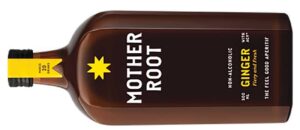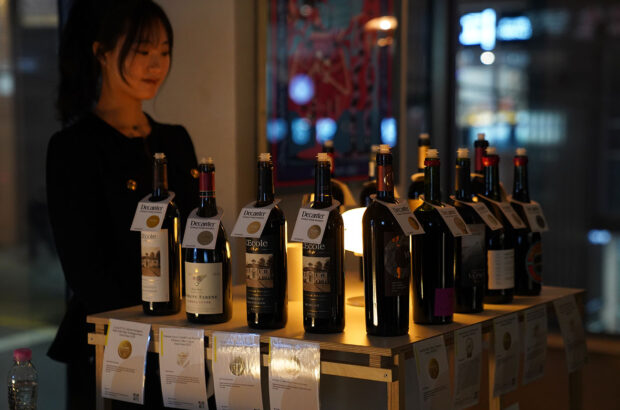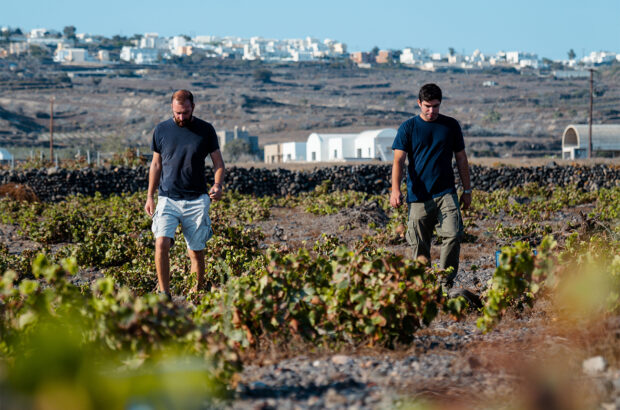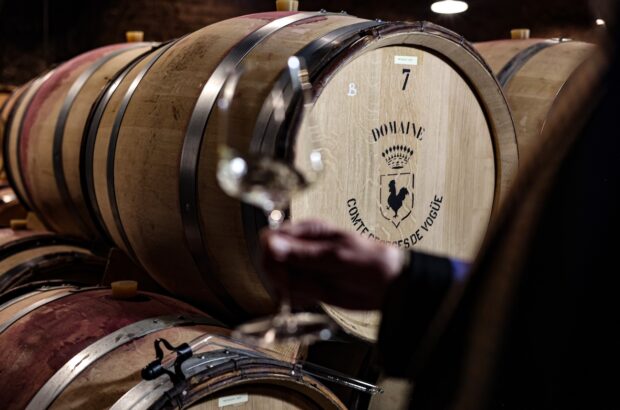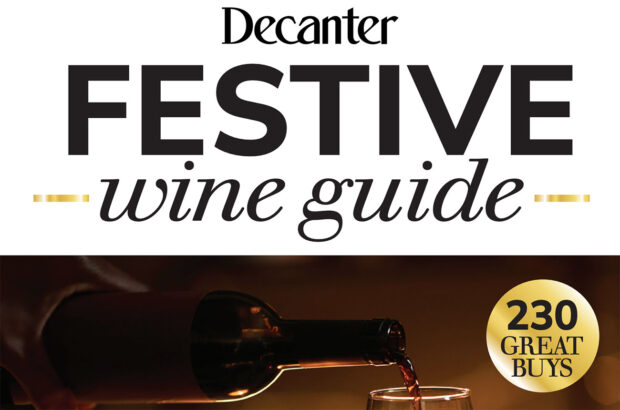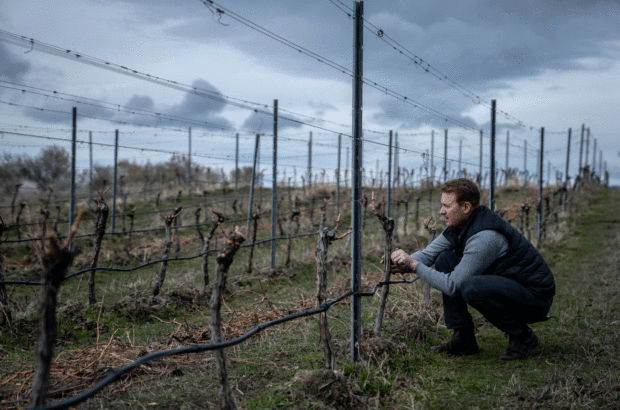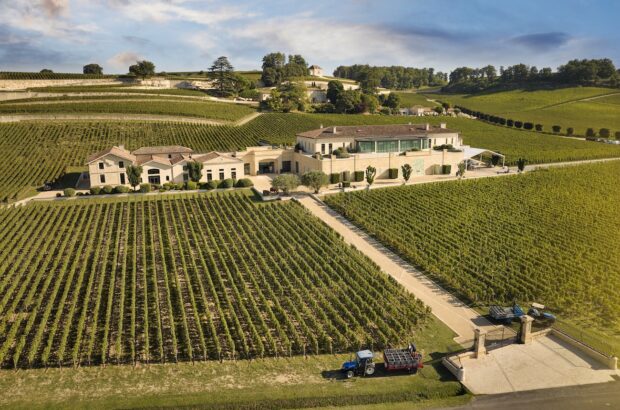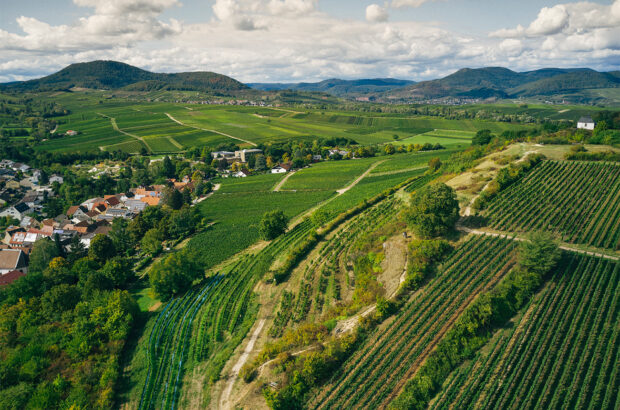While I was researching this article, it quickly became apparent that discussing alcohol consumption and moderation wouldn’t be a straightforward affair. Stakeholders come to the table with assumptions, agendas and moral viewpoints that often cloud the objective interpretation of studies and data – which, as I discovered, have many gaps and flaws themselves. Particularly problematic is that some of the key concepts at the core of the discussion (risk, excess, wellbeing – moderation itself) mean different things to different people.
Embracing complexity
Because individual agendas, assumptions and background were a recurring theme, it’s perhaps useful to begin by stating – clearly and humbly – the premises with which I arrived at this subject myself. Wine is part of my diet, a companion to meals (not every day). I see wine as a cultural artifact, of intrinsic value before it reaches the glass – a source of pleasure but also of intellectual and aesthetic stimulation. That so many different, complex, evolving iterations of the same plant-derived product can be produced – reflecting different cultures, times and places – is a matter of enduring fascination to me.
I’ve consumed alcohol – moderately; very rarely anything other than wine – and this has been an important part of my family, professional and social experiences. Pregnancy and nursing forced me to interrupt my alcohol consumption, which I did easily and happily (morning sickness helped tremendously!) in light of obvious, conflicting priorities. Abstinence forced me to explore the previously unknown territory of no- and low-alcohol drinks. Here be dragons? Not at all. My tasting experience expanded and flexed, and I found a dynamic community of entrepreneurs and industry professionals developing very interesting products for which
I’m sure that many Decanter readers will see themselves, somehow, in this description, with wine as an important part of their personal, if not also professional, identity, but being confronted at some point with the need – temporary or permanent – to moderate or stop drinking alcohol.
Our relationship with alcohol – as with other substances and habits – changes, necessarily, over time. Health, lifestyle, priorities, income, community – all are in continuous flux. What works today might not work tomorrow. What works for me may not work for you. So at what point does drinking wine become ‘bad for you’? Can such a line be drawn? How much is too much?

Dr Laura Catena, Bodega Catena Zapata. Credit: Dave Lauridsen Photography
Studying the studies
Let’s turn to science and official guidelines, in the first instance, for information and data. In 2022, the World Health Organisation (WHO) reviewed its alcohol guidelines, subsequently stating that ‘no level of alcohol consumption is safe’, mentioning a study published in The Lancet (‘Alcohol and Health’; Manthey, Shield et al, November 2022). The Drinkaware website also states that ‘the safest level of drinking is to drink no alcohol at all’.
This view is neither unanimous nor longstanding. The ‘no alcohol is safe’ message – and the validity of the interpretation of the underlying studies – has been and continues to be questioned by many. ‘The WHO guidelines cites its own correspondence rather than The Lancet’s 2022 statement* on cardiovascular protection for moderate drinkers aged over 40, which I think is misleading,’ says Dr Laura Catena, a physician (Stanford Medical School class of 1992 and 27 years in emergency practice in California) and fourth-generation winemaker in Argentina. ‘The study concludes with moderate certainty [because all these studies are observational, the use of low/moderate/high certainty needs to qualify all conclusions drawn] that there are cardiovascular benefits to moderate drinking above a certain age.’ (*‘Consuming a small amount of alcohol for people in [the over 40] age group can provide some health benefits, such as reducing the risk of cardiovascular disease, stroke, and diabetes.’)
Pauline Vicard of Areni Global, an independent think tank dedicated to the future of fine wine, has held multiple sessions on moderation and responsible drinking. She reiterates this view. ‘Moderate consumption still stands, both from a cultural and scientific standpoint,’ she says. She refers to the overview conducted by the IARD organisation of meta-analyses on alcohol consumption and all-cause mortality published between 2000 and 2023, all of which show that light to moderate drinkers have the same risk, or lower, than non drinkers. (Listen to Why Moderation is Still a Valid Concept, an interview with IARD’s chief scientist Jennifer Tujague, January 2025, on Areni Global: In Conversation’s podcast channel.)
Also supporting this stance is Felicity Carter, a journalist and speaker who has carried out extensive research on wine and health. She mentions the National Academies of Sciences, Engineering, and Medicine’s 2025 Review of Evidence on Alcohol and Health as ‘the study that currently offers a better understanding of the impact of moderate consumption’. Requested by the US Congress to inform the next edition of the Dietary Guidelines for Americans, the report concluded ‘with moderate certainty that compared with never consuming alcohol, moderate alcohol consumption [two drinks per day for men and one drink per day for women] is associated with lower all-cause mortality [total number of deaths in a population due to any cause].’ However, the report also identified a correlation between moderate consumption and a higher risk of breast cancer.
Catena recognises this particular risk but seeks to put it into perspective. ‘Moderate consumption translates into a potential 1.1x increase in cancer risk – possibly related to higher estrogen production. For a typical female [in the US], this increases the lifetime risk of breast cancer from about 12% [according to non-profit BCRF in New York] to about 13.2%. And for a woman aged 60, the chances of dying from cardiovascular causes are about 10 times those of dying from breast cancer.’
It’s worth noting that since 1988, alcohol has been listed as a carcinogen by the International Agency for Research on Cancer, associated with higher risk, in addition to breast, of cancers of the digestive tract and liver. On the other hand, moderate drinking has also been linked to lower incidence of kidney and thyroid cancers and some hematologic illnesses.
Recognising the risks, along with potential benefits, is the first step to building a better, healthy relationship with wine drinking. Untangling the risk/benefit conundrum calls for a true understanding of that elusive concept: moderation. ‘The fact is that beyond what is considered low to moderate drinking, all benefits disappear,’ concludes Catena.

The Mediterranean eating approach evokes wine’s positive social and cultural role. Credit: Solovyova / Getty Images
Your mindful drinking toolkit
Zebra striping
A moderation strategy that involves alternating alcoholic with non-alcoholic drinks. It’s effectively an elevated take on the ‘one glass of water for each glass of wine’ adage that encourages you to explore the huge range of no/low options out there.
Small pours
For wine, make sure to stick to pours of no more than 100ml. This leaves space to swirl, release aromas and better enjoy what’s in your glass, while helping you to pace yourself.
Dry days
Schedule days when you don’t drink at all. Put them in your calendar, as a commitment to yourself. This will allow you to observe whether drinking alcohol is acting like a daily coping mechanism – and stop it being one, if so.
Don’t finish the bottle
Just because you’ve opened a bottle of wine, you don’t have to drink it all. Invest in a preservation system to help achieve those beneficial dry days, such as a vacuum pump – or the pricier Coravin device, which replaces air in the bottle with inert gas via a needle inserted through the cork. Equally, many white wines, particularly those with higher acidity, will keep well over a few days simply by reapplying the closure and standing the bottle in the fridge door.
Ask why/who/when?
Take a step back and consider the reasons, company and moments that act as a backdrop – or driver – for your drinking. This distinction is important because if, say, conformity or obligation are the underlying driver, consuming alcohol might not be helpful.
Take notice
You’ll want to remember the wine you’ve drunk and the people you’ve shared it with. Instead of simply drinking, make sure to consume with intention. Awareness of the producer, region and variety will also help you create better sensorial memories, making you a better taster altogether.
Slow down
All of the above should allow you to pace yourself before, during and after drinking, building a more reflective and intentional relationship with wine.

‘One glass of water for each glass of wine’. Credit: Mashasay / Shutterstock
Know thyself
All those interviewed for this article warn that moderate consumption is usually less than people think and that most of us need to rethink drinking patterns and habits. This, says Laura Willoughby MBE – mindful drinking advocate and founder of Club Soda, a NoLo online shop, tasting room and community – is an opportunity to ‘drink less but also to “drink better”, saving drinking for your favourite tipple, in your favourite place, with friends you love spending time with.’
Drinking well requires the willingness to ask oneself tough questions and consider change – at times, radical. Willoughby states that, even at moderate levels, there might be a non-quantifiable negative impact on an individual’s life – sleep quality, mental health, productivity. ‘In our courses we encourage people to ask whether drinking is preventing them from achieving their goals or being who they want to be.’ Conversely, Catena highlights all the equally unquantifiable positive consequences of moderate, social drinking – lower anxiety, consolidation of interpersonal bonds – and pleasure. ‘A life empty of small pleasures is not worth living,’ she says.
The path to moderation demands an examination of the role that drinking plays and how it affects one’s daily life. Setting aside scientific findings and risk levels, it’s a matter of self-awareness and careful observation. Vicard says that the starting point should be an analysis of one’s history and background. Family antecedents in alcoholism are an obvious red flag, but you should also look at areas such as mental health, sleep quality, stress levels and chronic health conditions.
On a more subtle level, stay attuned to the effect alcohol has during and after drinking, and the purpose drinking is serving. Vicard describes a range of common motivators: social; pleasure; conformity (drinking to fit in); coping (drinking to forget); enhancement (drinking because it’s exciting); wanting the effect of alcohol; work (drinking on a work occasion and/or out of a feeling of obligation). If the latter five are your main drivers, you might want to rethink your consumption and address the underlying vulnerabilities.
This dovetails with Club Soda’s mindful drinking approach. ‘Only you know how alcohol is affecting you physically, mentally and socially,’ says Willoughby. ‘There is no harm in cutting down or taking a break and seeing what changes – it will give you clues to new habits you can integrate into your routine.’
From an enjoyment perspective, there’s also a case to be made for moderation. Pierre Chandon – professor of marketing, innovation and creativity at graduate business school Insead and director of the Sorbonne University Behavioural Lab – found an inverse relationship between size of portion/pour and pleasure in recent research. ‘The key pleasure in food and beverage does not increase with quantity,’ Chandon said in conversation with Vicard for an Areni podcast. ‘Sensory pleasure peaks during the first few bites and diminishes with each subsequent bite.’

Laura Willoughby MBE, Club Soda. Credit: Michael McGurk
Plunge into the science – decide for yourself
Explore these websites and studies, and reflect on your drinking patterns, make informed decisions and decide on the imbibing habits that best suit your priorities, wellbeing and lifestyle…
Drinkaware
An independent charity, founded in 2006 by the UK government, the devolved administrations and the Portman Group (the social responsibility body and regulator for alcohol marketing in the UK). The facts section of its website provides links to the studies upon which the website’s advice and guidelines were based.
International Alliance for Responsible Drinking (IARD)
A membership organisation of 13 of the world’s largest producers of beers, wines and spirits, IARD has an extensive database of thousands of alcohol-related citations from peer-reviewed journals, including reviews, research papers, editorials and letters. It also has a handy one-stop shop (Drinking guidelines: General population, 2022) for all the – very different – drinking guidelines in each country.
In Defense of Wine
Dr Laura Catena has gathered her research and the many letters she has written to editors at leading media outlets, outlining what, according to her, is serious misinformation on health and alcohol. Whether you share her views or not, you’ll find links to all studies referenced and analysed. Catena also provides practical advice on moderation.
Wine in Moderation
An international community of wine industry stakeholders that promotes responsible consumption and risk awareness. The initiative has also created the Wine Information Council, which has an extensive database of scientific articles.
Ethics of optimal enjoyment
Moderation, therefore, isn’t just a matter of quantity but also of quality of experience. It can’t be considered separately from context and pattern. Which seems to support the relevance of the ‘Mediterranean diet’ approach that dominated the moderation space before the no-safe-level message took hold.
The consumption model it suggests is inherently paced, functional and social – one glass, with food, shared with family, friends or colleagues. It excludes impulse, bingeing or solo drinking. It evokes the positive social and cultural role that wine has had for thousands of years.
Carter calls on us to reflect on the utility and evolutionary relevance of wine drinking. ‘What purpose has it served to us as a species? Why do we have a biological mechanism to break alcohol down? It inhibits us just enough to make meaningful connections. We shouldn’t relinquish this,’ she says. But never at the expense of health and awareness.
‘I like the concept of drinking responsibly,’ says Vicard. ‘With respect for oneself – one’s limits, body and health; for others – not making other people uncomfortable or putting them at risk; and respect to the producer, by giving proper value and attention to the product of their labour.’
Life is a beautiful game of non-stop risk assessment and risk-taking. A life well lived is one in which one is willing to engage in play – with satisfaction, meaningful connections and intellectual stimulation as rewards. While never getting lost to the allure of the risk itself.
White stripes
If you’re looking for good options to alternate with your favourite tipples, these are among the best we’ve tried. For a fun, enjoyable zebra striping experience.
1 Lucky Saint Unfiltered Lager
(Alcohol 0.5%)
£1.50-£1.83/33cl Widely available
A truly balanced alcohol-free beer that will have you wondering if it’s worth having an alcoholic counterpart at all. Thirst-quenching zestiness and malty moreishness make it enjoyable on its own but also a perfect companion to food. Fish and chips anyone?
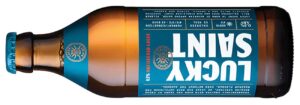
2 Wilfred’s
(Alc 0%)
£19.95-£22/50cl Amathus Drinks, EW Wines, Master of Malt, Ocado, Threshers, Wilfred’s
Simply mixed with tonic, on the rocks with a twist of orange, this makes a delicious alcohol-free aperitif in which aromas of rosemary and orange dominate. Or mix with Prosecco and soda for a lower-abv spritz – I’ve served this to unknowing guests without anyone noticing that Aperol/Campari had been replaced.

3 Domaine E de M, N.0 Rosae
(Alc 0%)
US$20-$28/75cl Compass Wines, Hi-Time Wine Cellars, Porter21.com, The Zero Proof, Third Base Market and Spirits
A gently sparkling wine made from Airén grapes that has undergone vacuum distillation and is then infused with rose petals. The result is a seductive drink with texture, zesty verve and elegant florality, ideal for summer barbecues or lazy Sunday brunches. Domaine E de M is a project – named after Elena Maza, Nicolás Catena’s wife – led by Laura Catena at the Catena Institute of Wine, to develop no- and low-alcohol products.

4 Saicho Cold-Brewed Sparkling Teas
(Alc 0%)
£17.59-£28.99/75cl Amazon, Champagne King, Harrods, Master of Malt, Saicho, Selfridges, The Whisky Exchange
The most vinous of the NoLo alternatives shown here, the Saicho range leverages tea’s tannins in the same way as wine would, building a framework on which flavours can rest and hold. It’s not by chance that these are among sommeliers’ favourite NoLo pairings. I’m partial to the umami appeal of the Hojicha bottling, but the Darjeeling and Jasmine are also worth trying.

5 Mother Root
(Alc 0%)
£24.95-£27.95/50cl Widely available
This has become a personal favourite due to its intensity and versatility. For those like myself who love ginger and apple cider sourness, Mother Root packs a fiery punch. Great mixed with soda with a sprig of rosemary. Also perfect for more complex concoctions – non-alcoholic or otherwise.
